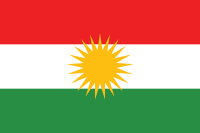
Photo from wikipedia
This is the first study to detect cryptosporidiosis among children in Duhok city/Kurdistan region of Iraq. The study included 332 stool samples of children using Modified Ziehl Neelsen Method (MZNM)… Click to show full abstract
This is the first study to detect cryptosporidiosis among children in Duhok city/Kurdistan region of Iraq. The study included 332 stool samples of children using Modified Ziehl Neelsen Method (MZNM) and 122 of these were randomly selected to detect Cryptosporidium by ELISA. By MZNM, the infection rate of Cryptosporidium oocysts was 66.95% in children; 44.68% in immunocompromised (ICD) and 22.27% in immunocompetent (ICT) group. Among ICT children, the infection rate was highest among less than one year of age (39.34%) in diarrheoic group, while in non-diarrheoic group, it was highest among 1-4 years age (28.57%). Among ICD children, the relations were non-significant among ages. Out of 122 stool samples of children, 26 (21.31%), and 30 (24.59%) were positive by MZNM and ELISA, respectively. In conclusion, ELISA was more sensitive and specific than MZNM which were 82.5% and 90.91% respectively. This study indicates that asymptomatic infection is common among different age groups of children.
Journal Title: JPMA. The Journal of the Pakistan Medical Association
Year Published: 2020
Link to full text (if available)
Share on Social Media: Sign Up to like & get
recommendations!